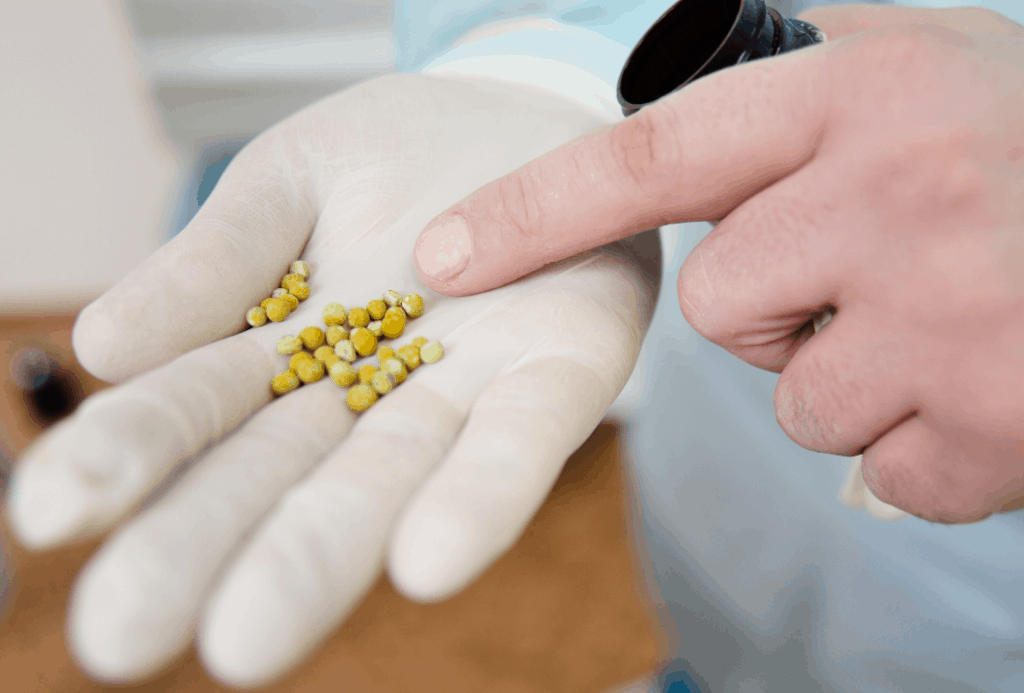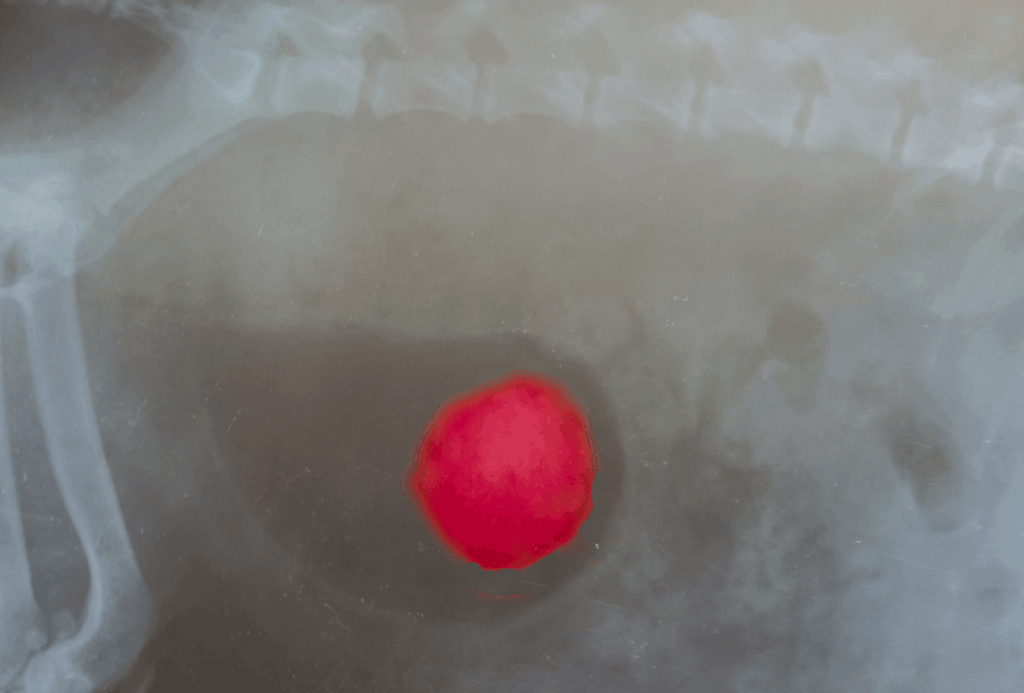Does My Dog Have Bladder Stones?
Bladder stones in dogs are firm clumps of minerals that have accumulated in the urinary bladder over a certain period of time. If you notice that your dog is having trouble urinating, what do you do? Is it possible that your dog has bladder stones and requires urgent medical attention?
Bladder stones are problematic because they can cause inflammation, discomfort, and can lead to a urinary obstruction, which is a medical emergency. No, your dog cannot just continue living life as normal if they have bladder stones, those bladder stones may need to be removed or resolved through other treatments.
In this article we discuss everything you need to know if you suspect your dog has bladder stones, first things first: get them straight to see your vet!

What causes bladder stones in dogs?
In a healthy dog, there are low numbers of various minerals in the urinary bladder at all times. Given the right conditions, these minerals can precipitate into a solid structure around cells or bacteria in the urine. These stones can get bigger in a short period of time, and there can be many stones present at once.
There are different types of bladder stones. Struvite and calcium oxalate are the two most common types, accounting for nearly 85% of all bladder stones in dogs. Minerals like struvite are normally present in your dog’s urine. However, when there is bacteria in your dog’s bladder, his normally acidic urine can become more alkaline. This is the ideal condition for the formation of struvite crystals which accumulate around the bacteria and eventually become stones. The mechanism behind the formation of calcium oxalate stones is not well understood, but recent research suggests that the overuse of antibiotics may lead to the presence of excess oxalate minerals in the urinary bladder.
Signs and symptoms of bladder stones in dogs
If your dog is having painful urination (dysuria) or has blood in his urine, then he may have bladder stones. He also may seem like he has to urinate more and will want to go outside more frequently. Another important clue is when there is the presence of blood in your dog’s urine, also known as hematuria. Some dogs may posture to urinate for longer than is normal, and if your dog is not producing any urine at all, then make sure to contact your veterinarian right away. This could be a sign that your dog has a urinary obstruction which, if left untreated, can be life-threatening.
In some cases, your dog may not show any symptoms at all. This is especially common when bladder stones are very tiny and difficult to detect on a normal physical examination. However, if your dog is experiencing recurrent urinary tract infections or his urinary issues are not improving with other therapies, then your veterinarian will recommend some tests to rule out bladder stones.
Diagnosing bladder stones
X-ray
If your dog has struvite or calcium oxalate stones, then your veterinarian may be able to see these stones on an x-ray of your dog’s abdomen.

Ultrasound or Contrast
Other stone types like urates and cystines will not be visible on x-rays, but they may be detected by an abdominal ultrasound or by using contrast medium. Contrast is a special dye that is inserted into the bladder and can help delineate these seemingly invisible types of stones on an x-ray image.
Physical examination
If the bladder stones are large enough, then your veterinarian may be able to feel these in your dog’s bladder during a physical examination.
How do you get rid of bladder stones in dogs?
Antibiotics & anti-inflammatory medication
Treatment varies from patient to patient. Since bladder stones can cause urinary tract infections, your veterinarian may prescribe an antibiotic and sometimes an anti-inflammatory medication to help keep your dog comfortable.
A prescription urinary diet
Dogs with crystals in their urine are more likely to develop bladder stones, so your veterinarian may recommend a prescription urinary diet. These special diets can prevent more crystals from forming because they have lower mineral content than most commercial foods, and they can increase your dog’s thirst which will keep the urine in his bladder less concentrated.
Certain diets can even dissolve struvite crystals that have already formed, and in some cases, these diets can dissolve small struvite stones. Struvite bladder stone dissolution can take several weeks and should be monitored by repeating x-rays every couple of weeks.
Make sure not to feed our dog any human food
Other types of stones, like calcium oxalates, cannot be dissolved by diets. Because certain types of human foods can cause an increase in urine oxalates (e.g. beets, spinach, green beans), it is best to avoid giving your dog any human foods or table scraps if he has urinary problems.
Surgical removal of the bladder stones
This kind of surgery is recommended if the bladder stones do not dissolve with a urinary diet, if the bladder stones are large or painful, and if the stones are causing a urinary obstruction. The urinary bladder is one of the fastest healing organs in the body, so recovery from surgery is generally quick.
Ultrasonic dissolution
If surgery is not an option, then ultrasonic dissolution may be recommended. This technique uses high frequency ultrasound waves to break up bladder stones, and it is offered at certain specialty hospitals.
What happens once the bladder stones are removed?
Laboratory testing
Once the bladder stone is removed, it can be submitted to a laboratory for testing. This is especially important because dogs can have a mixture of different types of stones. For example, a bladder stone can have an outer layer made of struvite but can have a core made up of calcium oxalate! When the stone analysis is complete, your veterinarian can recommend diets and medications that are more specific for your dog’s needs.
Medication to prevent urinary crystals coming back
In rare cases, your dog may continue to form urinary crystals even if he is eating urinary prescription food and drinking plenty of water. If your dog does continue forming calcium oxalate crystals, then your veterinarian might prescribe a diuretic medication like hydrochlorothiazide. This will further increase his thirst and keep his urine very dilute.


If you suspect that your dog is having urinary problems, then make sure to contact your veterinarian right away
When your dog is having urinary problems, it can be very frustrating. If initial treatments don’t seem to be working, then your dog may have bladder stones. X-rays or abdominal ultrasound can help detect the presence of stones in your dog’s bladder. In some cases, bladder stone dissolution is possible with diet change, and surgery is the quickest way to treat bladder stones.
The post Does My Dog Have Bladder Stones? appeared first on VetBabble.




Post a Comment